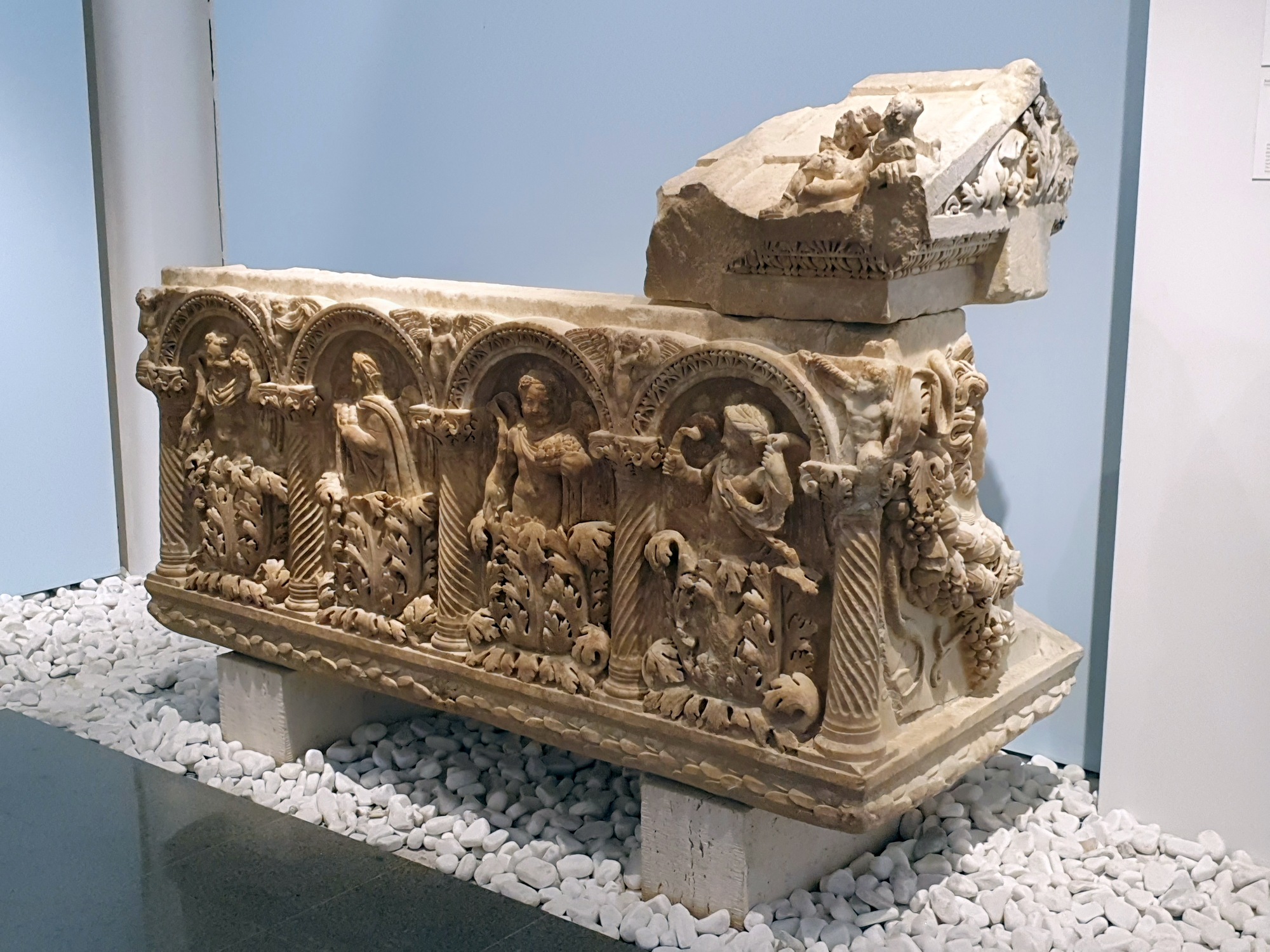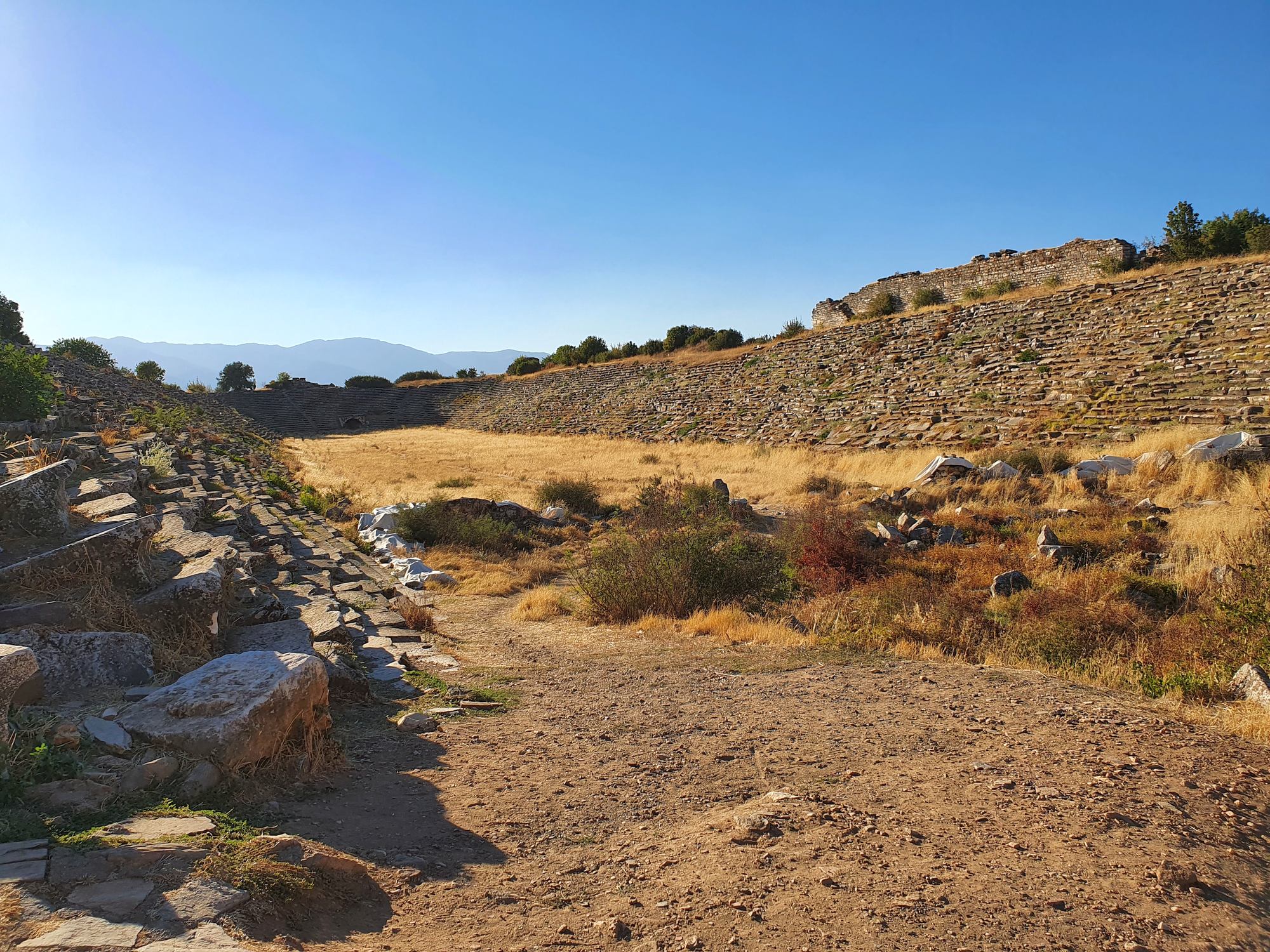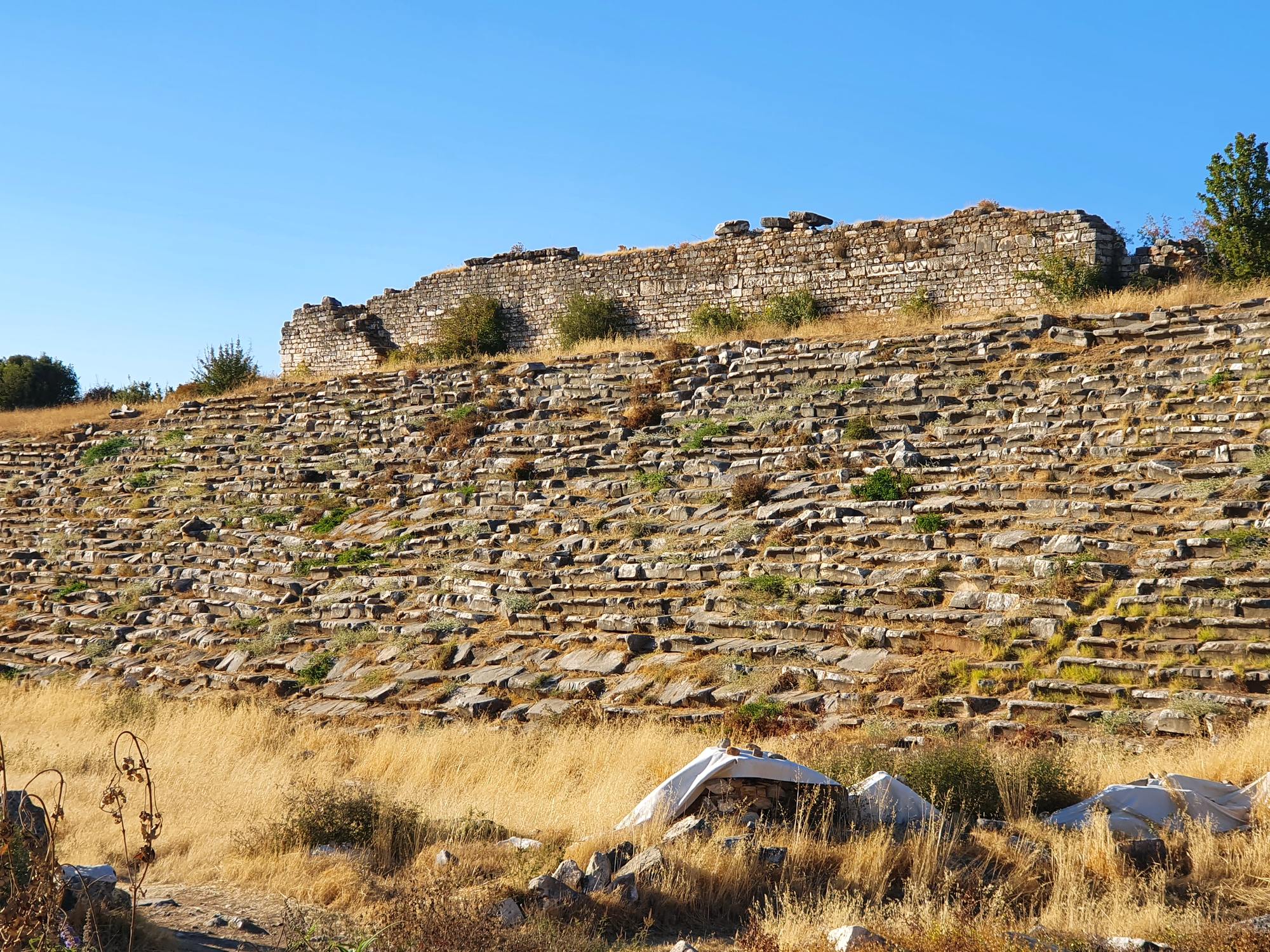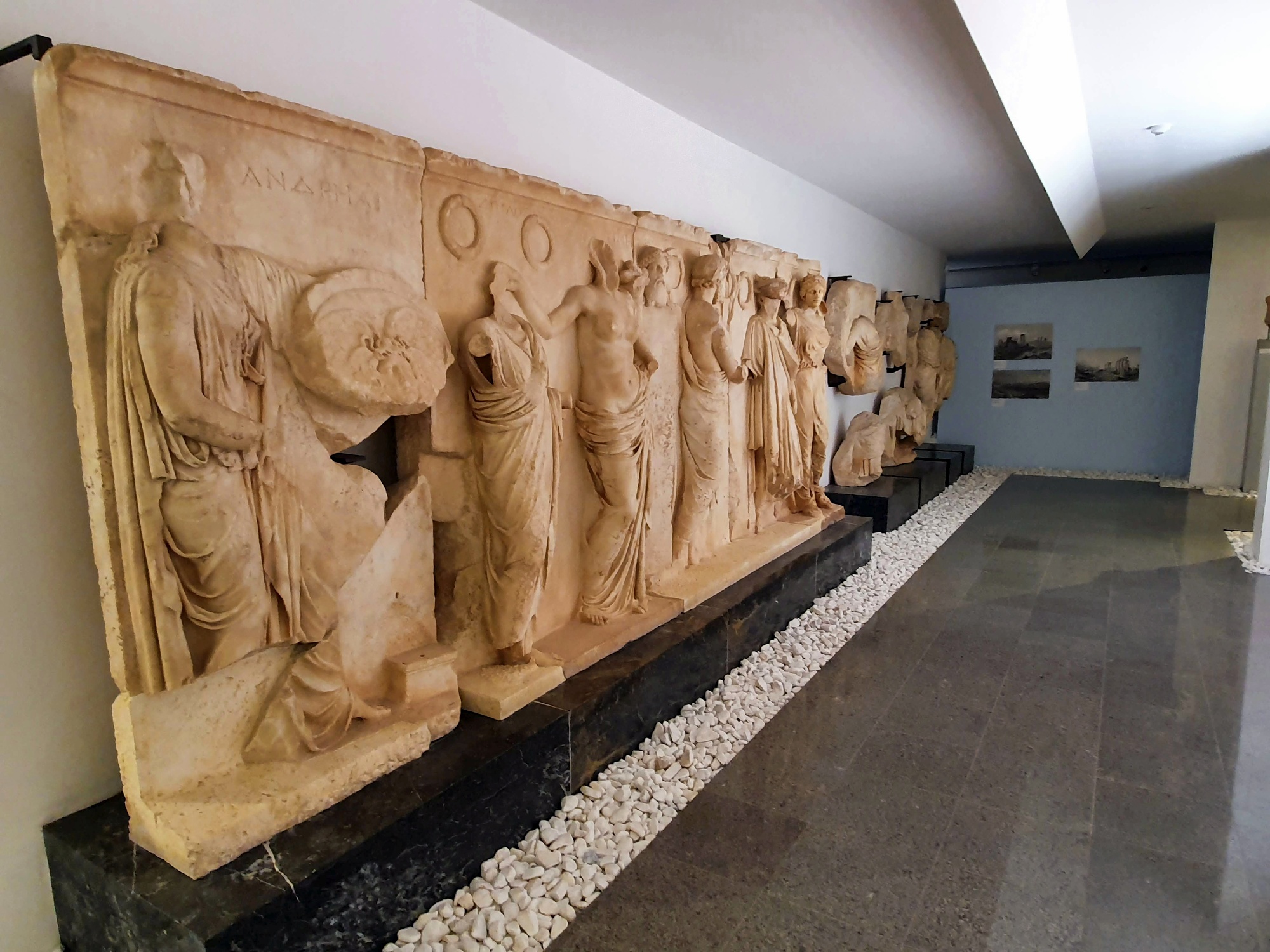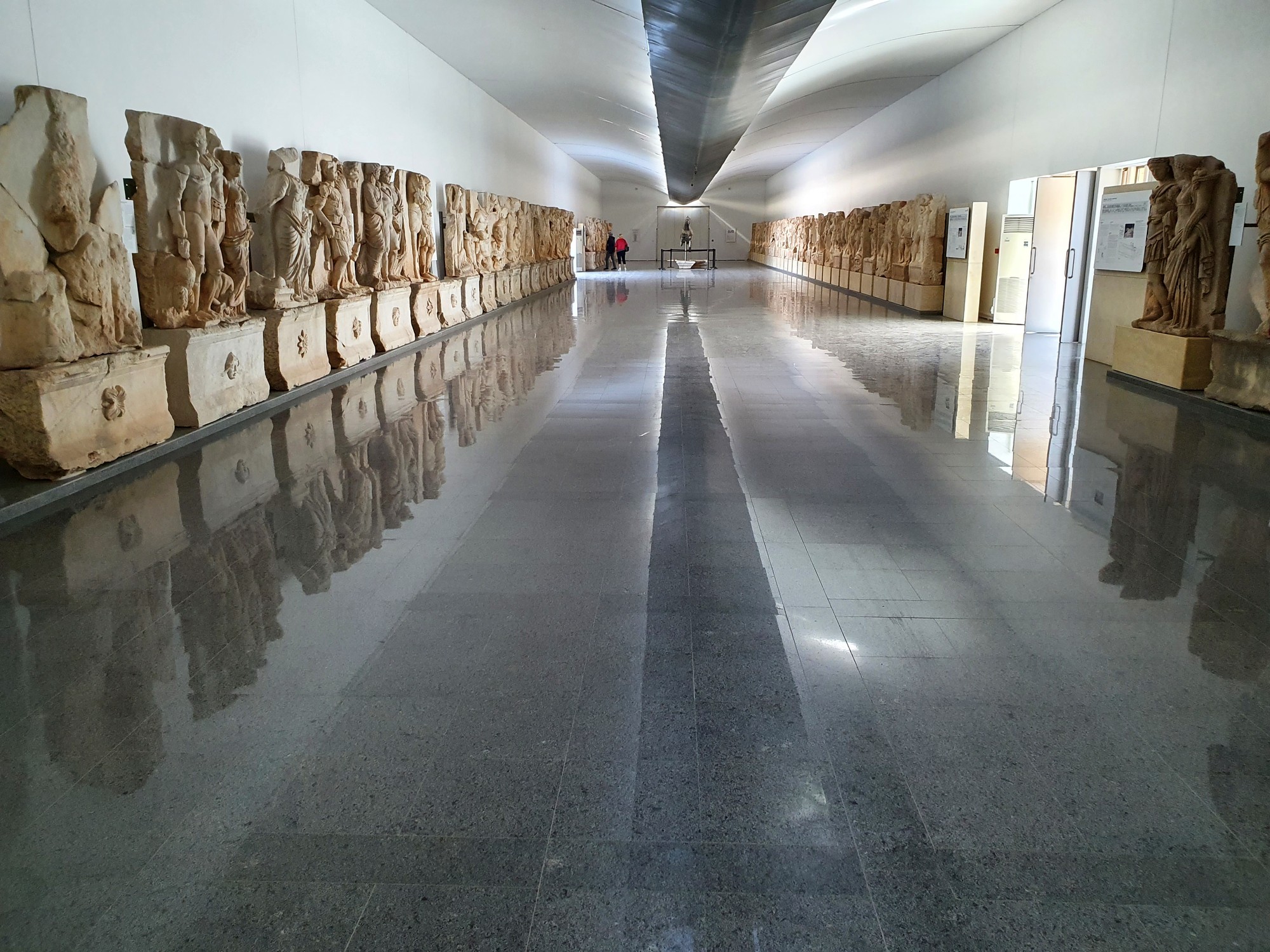Text and photos by our correspondent from Didyma, Glenn Maffia.
It delighted me immensely to recently read that the Aphrodisias Archaeology Workshop shall resume after the Covid enforced hiatus of some two years. This initiative, set in motion in 2018, fulfils an important educational and social criterion which hopefully realizes a vast improvement on the appreciation of historical artefacts; their context, their unadulterated quality and beauty, and the constant state of flux which encapsulates all civilizations.
I am particularly encouraged that priority admittance to this workshop shall be given to children, as open minds absorb so much more than those carrying too much preconceived baggage, a condition that is anathema to learning. I wish the project every success, and that it may lead to a greater appreciation rather than the all too familiar exploitation.
Early explorations
As always, before visiting an archaeological site for the first time, I prefer to delve into a little research just to familiarize myself with the place. And, most certainly, Aphrodisias has a fascinating story of serendipitous good fortune interwoven into its fabric of being a world renowned ancient site.
Though the site was known and expeditions sent there, these merely scratched the surface, if that. Western research teams and the occasional casual traveller began to seek out the ancient city. During 1812 those intrepid 'gentlemen of identifying and recording antiquities', the Dilettanti Society of London, despatched a team consisting of architects and illustrators. Their sterling work produced the first design plan of the city.
The indomitable traveller Charles Texier ventured to the city in 1835 and published his findings in his work 'Description de l'Asie Mineure' (Description of Asia Minor). Whilst, no doubt not wishing to be left behind, the director of Istanbul's Royal Museum (Muze-I Humayun), Osman Hamdi Bey, ventured to Aphrodisias with the intention of beginning an archaeological excavation, though this aspiration eventually never came to fruition.
Nonetheless, the site was on the archaeological map and the first excavation work was not long in coming. Between 1904 and 1905 the French railroad engineer, amateur archaeologist, and collector Paul Gaudin began the first dig within the city. A second dig was undertaken by Andre Boulanger in 1913, but this excavation was curtailed by the outbreak of World War I. A third excavation of Aphrodisias was started by the Italian Giulio Jacopi in 1937, though this was also left incomplete due to the outbreak of World War II.
Thus, Aphrodisias lay forlornly undisturbed, neglected if not forgotten, gathering a covering of grasses and weeds and the added accumulation of dust and dirt which built-up over the ruins. And there it lay, with its only companion, the small village of Geyre (a Turkic corruption of 'Caria').
The long fading Ottoman Empire exhaled its dying breath after the carnage of World War I and the colonialist powers of Britain, France and Italy conceived to circle to divide the spoils of war of this once great Empire. Though the Turks were in no position to do anything when North Africa and the Middle East dominions were taken from them, they would defend their homeland. This they did so heroically. Anyway, as we know, Atatürk repulsed the efforts of the western allies to not only save Anatolia from those avarice-hungry hands, but to also bring the newly formed Republic of Türkiye into the modern age technology of the 20th century.
Ara Güler's discovery
In 1958, the Turkish magazine 'Hayat' detailed the photojournalist Ara Güler to cover the opening of the Kemer Dam in Aydin province. This is where serendipity arrives in full force, for upon Güler's return his taxi driver became lost. They decided to find somewhere to stay overnight before continuing their journey the following morning. They stopped in a remote village (Geyre) and inquired at a local coffee-house about a place to stay. Güler couldn't help but notice that the men were playing cards upon a Roman column capital fashioning as a 'table'. Comprehending that this capital could hardly have arrived by chance, it dawned upon him that the village was built upon an antique structure or structures.
Güler arose early the following morning and persuaded some children to show him around the village, whereupon, they showed him around sites which they had been using as a playground. Güler photographed the remains of the Temple of Aphrodite, a stadium and many sarcophagi.
Upon his return to Istanbul, Güler sent the photos of his rediscovery to the 'Architectural Review', whereupon he then received a request from 'Horizon' magazine requesting colour photos and an article to go alongside the photo essay. Güler put forward the name of a New York University professor, Kenan T. Erim; the professor accepted the invitation and proceeded to devote his life to excavating Aphrodisias.
Having American money behind him, Professor Erim could request that the village of Geyre, which had recently been damaged by an earthquake, be moved 2 kilometres away (oh, I wish that would have been done here in Didyma).
There is a rather touching comment from Professor Erim, "When I took the road from Nazilli in July 1959, I couldn't have imagined how important a journey this was going to be. Before getting as far as Geyre on a very rough road out of Karacusu, I saw the pillars of the Temple of Aphrodite. The village had completely swallowed up Aphrodisias, but it was nonetheless unable to conceal its wonders. Before evening, I returned to Nazilli. In my room in the only hotel in the district, I remember writing this 'This will be a whole new era in my life'".
Gleaming marble
Aphrodisias is to be located in ancient Caria, an indigenous land which thrived before the colonization of the Greek tribes to exploit the markets of Asia Minor. In today's geographical terms, it is 180 kilometres (112 miles) due east of Ephesus and 100 kilometres (62 miles) west of Pamukkale. Hopefully, these shall be landmarks familiar to you all.
As I explained earlier, there were many architectural fragments strewn throughout Geyre village where the children once played and which they showed to Ara Güler. Most prominent of these was probably the Temple of Aphrodite, which Professor Erim noted that he could see from afar upon his initial arrival at the site.
I am unaware if he had access to the plan of the city, meticulously mapped by the Dilettanti Society of London in 1812. Though, whether he did or not, the eminent Professor diligently sifted through the soil revealing, initially, the Temple of Aphrodisias, finding on his way many statues and sarcophagi. It was soon obvious that this a city entirely built of marble.
It is that gleaming marble which is so prominent in its proliferation and the exquisite craftsmanship of such a high quality that one doesn't require an imagination to vividly conjure that this city was a living and breathing school of sculpture.
The source of the marble material was positioned a mere 2-4 kilometres to the north of the city within the undulating hills with a gradient comfortably shallow enough to conveniently transport the stone down into the city. Can you imagine an entire city devoted to the Arts? I certainly can do so.
History of the site
Human settlement upon the Aphrodisias site dates back several thousand years to the Neolithic period. Occupation continued through the following Chalcolithic period and on throughout the Bronze and Iron Ages. Though these settlements were humble affairs, being identified as being placed upon the two hills of the eventual city; the hill which now plays host to the theatre we see today and also Pekmez Hill a little further to the east.
Legend conveys that the original settlement was named Lelegonpolis, later taking the name Megapolis. Later still, the name Ninoi was adopted, after the Assyrian ruler Ninus. The Assyrians had migrated westwards to escape the Medes and Babylonians, who had destroyed their ancient capital of Nineveh (in present day Iraq). They brought with them the cult of Ishtar, the Mesopotamian goddess of love. When the western seaboards were either colonized by various Greek tribes or extensively Hellenized, as Caria was by King Mausolus, the goddess Ishtar became the Hellenized version, Aphrodite.
Cybele origin
Personally, my instincts direct me to a distinctly older and purely Anatolian goddess, and that the indigenous Carians would have seen these 'imported' goddesses as nothing more than an adaptation of their ancient mother goddess, Cybele.
Though Cybele was of Phrygian origin, her cult spread throughout northern and western Anatolia. And it was a cult which persisted even under the foreign intrusions of 'alien' deities.
I was intrigued by the similarities between the famous statue of Artemis in the Ephesus Museum in Selçuk and the Aphrodite rendition in the Aphrodisias Museum. They are, of course, peas from the same Cybele pod. It is very difficult to usurp something which is so deeply ingrained within an indigenous society.
Documentary evidence
The first historical documents referring to Aphrodisias are to be found in the history of Caria written by Apollonius a native of Aphrodisias during the 3rd century BCE. Though it is not until the 1st century BCE that Aphrodisias finally emerges as a fully-fledged city. During 82 BCE, the Roman dictator (Rome had by the taken control of this land) Sulla (138-78 BCE) presented to the Temple of Aphrodite a golden crown and a double bladed axe, the latter being considered as holy within Caria.
These prestigious bequeaths illustrate the growing importance of the city within the Roman hegemony in Anatolia. It is also supportive of evidence that the nearby marble sources were being quarried and that the art schools producing sculpted work were gaining renown. By 30 BCE, during the reign of Augustus, it was clear that Aphrodisias had become a prosperous and respected city. Though the export of raw marble is not supported by evidence, there does appear that the finished sculptures were in high demand.
Today, the sculptural works remain in abundance. The architectural buildings are articulate and elegant, whilst still emanating an echo of that strength and dominance of the Roman Empire, the plentiful sarcophagi lavishly ornamented and the figurative statues within the museum are utterly exquisite.
When I visited with my friends, we spent Day 1 ambling around certain sections of the city (always leave some to be seen at a later date) and Day 2 captivated for hours in the excellent museum, before reluctantly returning to Didim. I highly recommend a similar itinerary.
Addendum
Professor Kenan T. Erim was employed by New York University when he was asked to conduct some preliminary field trips to the Aphrodisias site, and continued to be employed by that institution when the vast extent of the finding became obviously apparent. The archaeological work which continues upon the site remains under the supervision of New York University. Thus, it is crystal clear how and why the Aphrodisias excavations, maintenance and inventory logging differ from the 'traditional' mode of working in this country.
Most distinguishing is the academic sensitivity of precise maintenance and well-researched replacement of extant fragments of architecture and sculptural elements within a historically accurate representation. These archaeologists do not desire to create a pastiche for the gratification of indifferent tourists; their objective is to rebuild the ambience into our artistic senses. I have never perceived any abhorrent concrete upon this site.
I feel that I am 'banging on the same drum' here, but whilst these grotesque approximations persist to defile these once wondrous sites, I shall not succumb to kowtowing silence. History and the precision of that discipline is paramount, not only in my thoughts, but to those generations not yet born. Do not belittle a once glorious past into a 'theme park'. Take care, reverence and humility to the ancient's incredible achievements.
Aphrodisias, under the auspices of the New York University, is a shining light, as is the academic controlled discipline being conducted by the German Archaeological Institute at Didyma. Let these be the template of a responsible excavation and maintenance process within the future.






